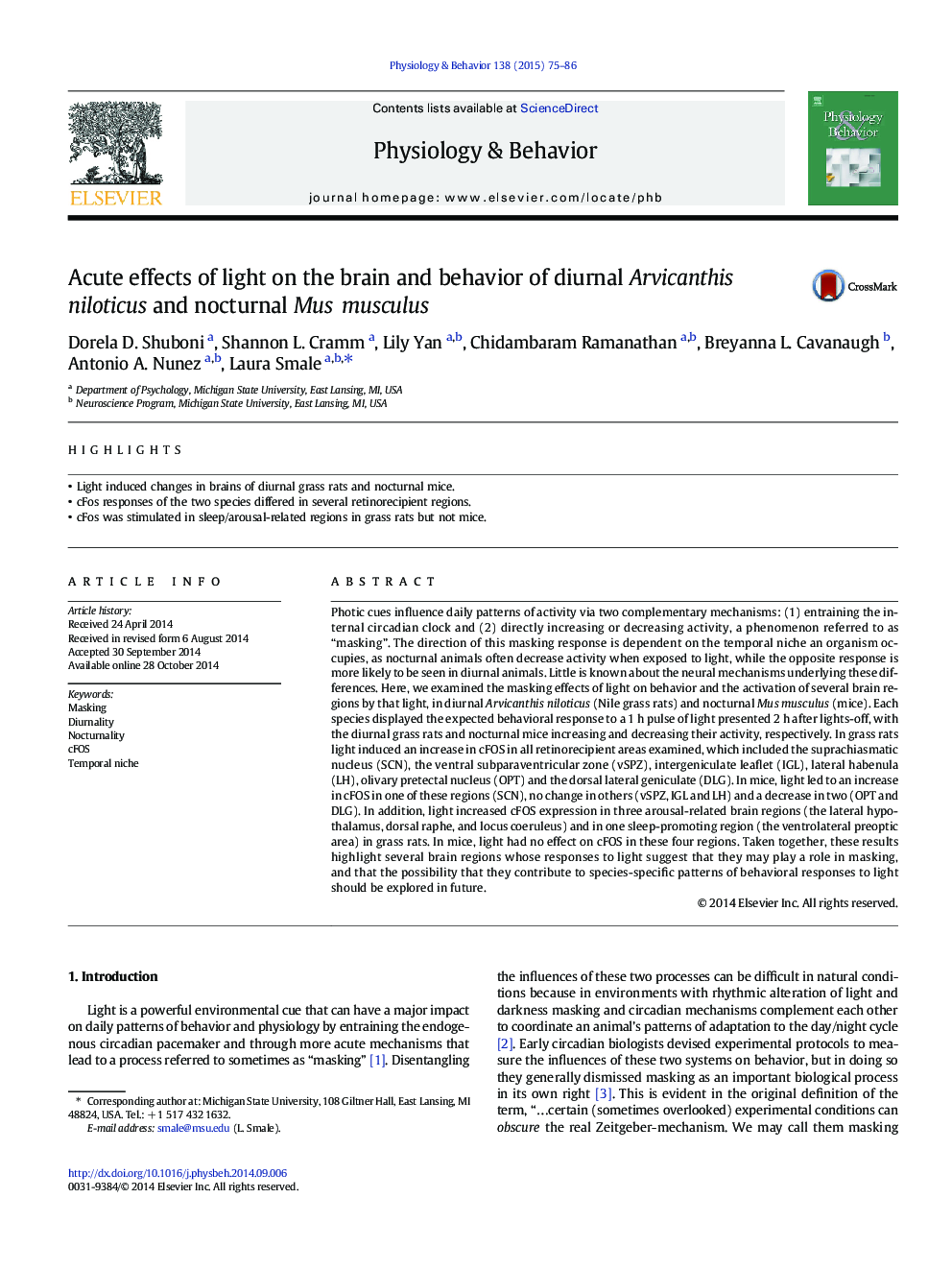| کد مقاله | کد نشریه | سال انتشار | مقاله انگلیسی | نسخه تمام متن |
|---|---|---|---|---|
| 2844195 | 1571179 | 2015 | 12 صفحه PDF | دانلود رایگان |

• Light induced changes in brains of diurnal grass rats and nocturnal mice.
• cFos responses of the two species differed in several retinorecipient regions.
• cFos was stimulated in sleep/arousal-related regions in grass rats but not mice.
Photic cues influence daily patterns of activity via two complementary mechanisms: (1) entraining the internal circadian clock and (2) directly increasing or decreasing activity, a phenomenon referred to as “masking”. The direction of this masking response is dependent on the temporal niche an organism occupies, as nocturnal animals often decrease activity when exposed to light, while the opposite response is more likely to be seen in diurnal animals. Little is known about the neural mechanisms underlying these differences. Here, we examined the masking effects of light on behavior and the activation of several brain regions by that light, in diurnal Arvicanthis niloticus (Nile grass rats) and nocturnal Mus musculus (mice). Each species displayed the expected behavioral response to a 1 h pulse of light presented 2 h after lights-off, with the diurnal grass rats and nocturnal mice increasing and decreasing their activity, respectively. In grass rats light induced an increase in cFOS in all retinorecipient areas examined, which included the suprachiasmatic nucleus (SCN), the ventral subparaventricular zone (vSPZ), intergeniculate leaflet (IGL), lateral habenula (LH), olivary pretectal nucleus (OPT) and the dorsal lateral geniculate (DLG). In mice, light led to an increase in cFOS in one of these regions (SCN), no change in others (vSPZ, IGL and LH) and a decrease in two (OPT and DLG). In addition, light increased cFOS expression in three arousal-related brain regions (the lateral hypothalamus, dorsal raphe, and locus coeruleus) and in one sleep-promoting region (the ventrolateral preoptic area) in grass rats. In mice, light had no effect on cFOS in these four regions. Taken together, these results highlight several brain regions whose responses to light suggest that they may play a role in masking, and that the possibility that they contribute to species-specific patterns of behavioral responses to light should be explored in future.
Journal: Physiology & Behavior - Volume 138, January 2015, Pages 75–86